#roman glassware
Text
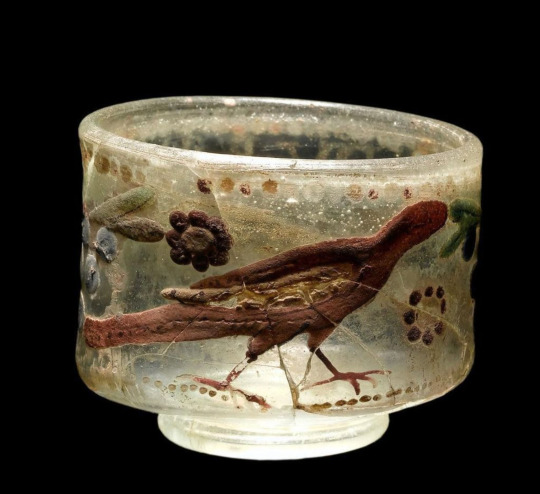
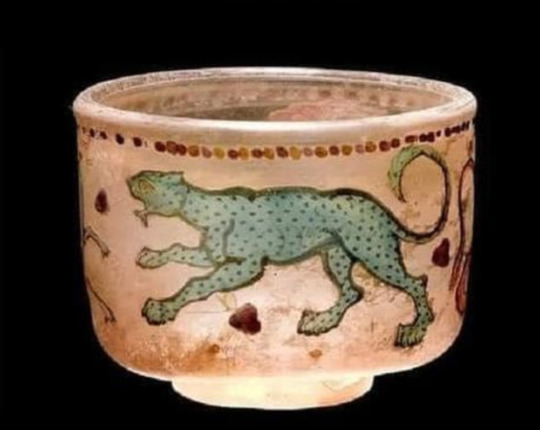
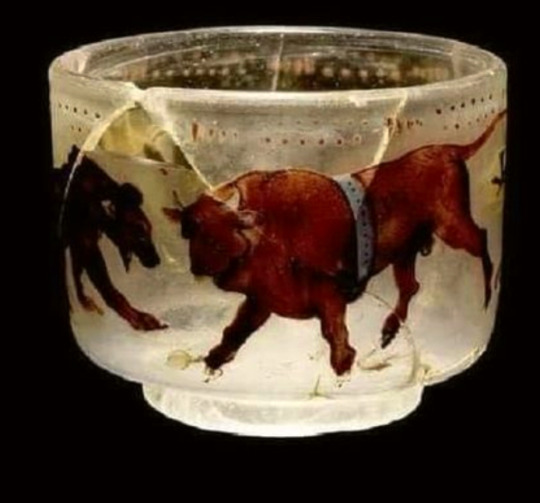
Roman Glass Cups (3rd Century AD)
1K notes
·
View notes
Text
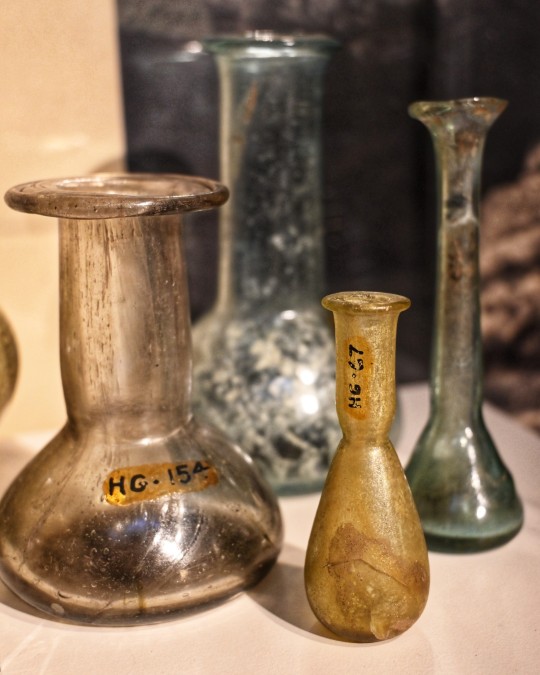
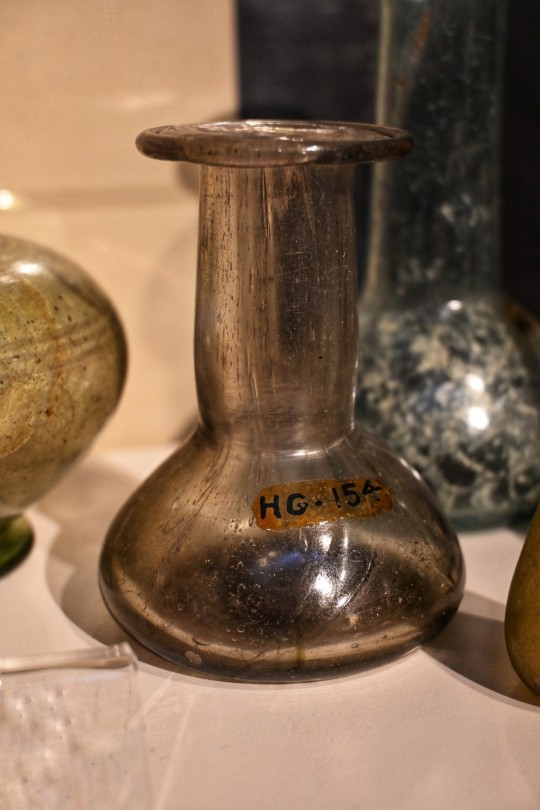
Roman Glass Phials, The Yorkshire Museum, York, Yorkshire
#roman#romans#roman glassware#roman style#roman empire#roman britain#roman craft#York#roman town#archaeology#yorkshire museum#relic#artefact#design#style#glassware#glass#ancient culture#ancient living
152 notes
·
View notes
Text

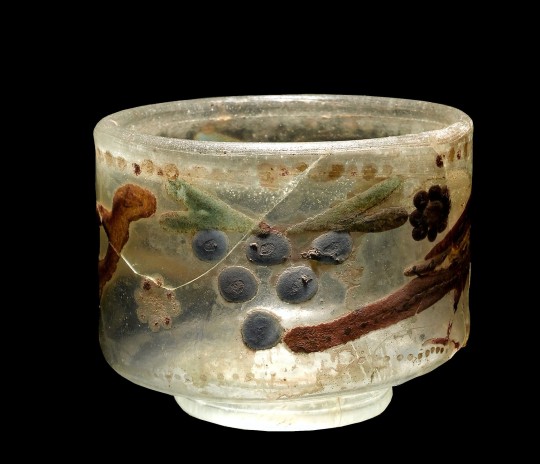

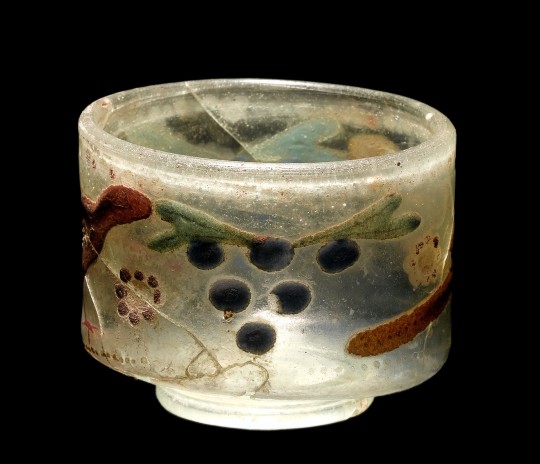
~ Circus cup decorated with flowers and birds
Place of origin: Varpelev, Denmark
Period: Roman
#ancient#ancient art#history#museum#archeology#ancient history#archaeology#roman#glassware#circus cup#denmark#varpelev
7K notes
·
View notes
Text

Roman Glassware Recovered From 2,000-Year-Old Shipwreck
Glassware in perfect condition was recovered from the wreckage of a 2,000-year-old Roman shipwreck lying 1,148 feet below the ocean's surface.
The shipwreck of the Capo Corso 2 was discovered in the area between the French peninsula of Cap Corse and the Island of Capraia in Italy. An excavation of the wreck took place in early July, when archaeologists found an abundance of ancient glassware, according to a press release from Italy's National Superintendency for Underwater Cultural Heritage, which conducted the mission alongside France's Department of Archaeological Research.
Archaeologists discovered that the cargo of this ancient ship consisted almost entirely of glass. Some of it was in blocks, while others were in the form of tableware artifacts.
Glass bottles, platies, cups, bowls, and two bronze basins were found. An amphora-a type of container created in the Bronze Age-was also discovered aboard the ship.


The cargo was "perfectly preserved," according to the press release. The finds will be taken to the laboratory of the National Superintendence in Taranto, Italy for closer inspections.
It is believed the ship sailed from the end of the 1st century to the beginning of the 2nd century AD, although this is not confirmed. A closer look at artifacts found aboard will hopefully give researchers a more definitive date, and hold clues into where it came from.
So far, archaeologists believe this ship must have sailed from the Middle East-from either Lebanon or Syria- considering the amphorae and glass on board. They also estimate it was heading towards Province, in France.
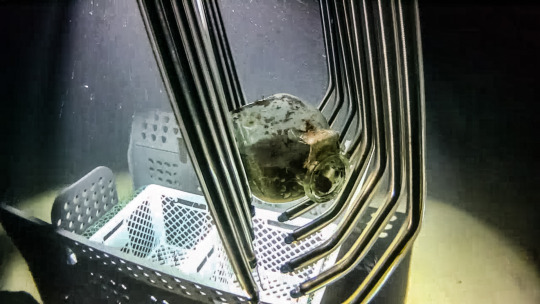

This is the second known Roman shipwreck in this region that appeared to be carrying an abundance of glass.
The Department of Archaeological Research in Drassm, France, used a research vessel called the Alfred Merlin to reach the wreck. The robot can reach 8202.0997 feet below the surface of the ocean and takes high resolution video of its surroundings.
Analysis of this ship and its cargo will give researchers new insight into the Mediterranean trade during this period.



But the mission was not just to recover the ship's artifacts, but to assess the biological state of the wreck. Shipwrecks often become artificial reefs for sea life over a period of time. The structures often create thriving ecosystems, as marine organisms attach themselves to their surface.
Assessing the biological colonization of the wreck will determine how well the artifacts can be recovered and conserved.
By Robyn White.
#Roman Glassware Recovered From 2000-Year-Old Shipwreck#Capo Corso 2#ancient glass#ancient artifacts#archeology#archeolgst#history#history news#ancient history#ancient culture#ancient civilizations#roman history#roman empire#toman shipwrech#roman art
279 notes
·
View notes
Text

Roman glassware
* Romano-Germanic Museum, Cologne
* coloured glass, hence 3rd or 4th century CE.
* Local workmanship IIRC
Cologne, November 2017
#Roman#glassware#3rd century CE#4th century CE#ancient#art#Germany#Cologne Romano Germanic Museum#my photo
46 notes
·
View notes
Text


Glass snake-thread flask shaped like a mouse,
Roman, 3rd century CE
Translucent cobalt blue, with same color added head, ears, eyes, feet, and snake-thread decoration.
Rounded and thickened rim; funnel-shaped, elongated neck with tooling marks around base; misshapen piriform body, with separate large blob of glass applied to rounded bottom of body.
The neck has been turned upwards to appear like the mouse’s tail; added to the body of the vessel to create the animal are four separate tooled trails for the feet and for the head a large blob that has been drawn out to make a pointed nose; ears and eyes have also been added to the head; the body is further decorated with snake-thread trails, all flattened and notched, in the form of two long-necked, thin-legged birds, one on the animal’s back, the other on his belly between his feet, interspersed with foliage comprising tendrils and ivy leaves; a plain spiral trail is wound twice around the lower part of the neck.
6.3 x 5.1 x 14.6 x 2.7cm
Courtesy: MET Museum
#art#history#design#style#archeology#sculpture#glassware#glassart#mouse#blue#cobalt#metmuseum#roman#flask#3rd century
27 notes
·
View notes
Photo

Glass bottle with handles
Roman, 1st century A.D.
Saint Louis Art Museum
#ancient glass#glassware#bottle#Ancient Rome#Imperial Period#Saint Louis Art Museum#SLAM#archaeology#Roman
75 notes
·
View notes
Text

grave goods, including painted beads, gold jewelry, ceramics, and the remains of a glass vessel among other items, excavated at Dion (c. Hellenistic and Roman periods; Dion-Olympos, Greece)
On display at the Archaeological Museum of Dion
#isaac.jpg#archaeology#classical archaeology#greek#roman#glassware#ancient jewelry#jewelry#grave goods#dion#archaeological museum of dion#hellenistic
121 notes
·
View notes
Text

#glassware#glass jug with a smaller glass jug inside from Cologne Switzerland. Roman 4th century AD.
0 notes
Text
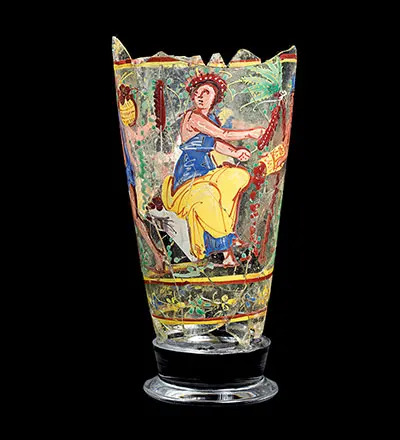
This brightly paint-enamelled beaker, with people harvesting dates, was created in Roman Egypt and discovered at Begram in Afghanistan.1st-2nd centuries CE
0 notes
Text
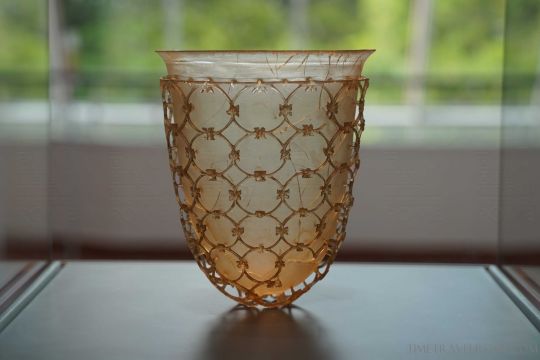
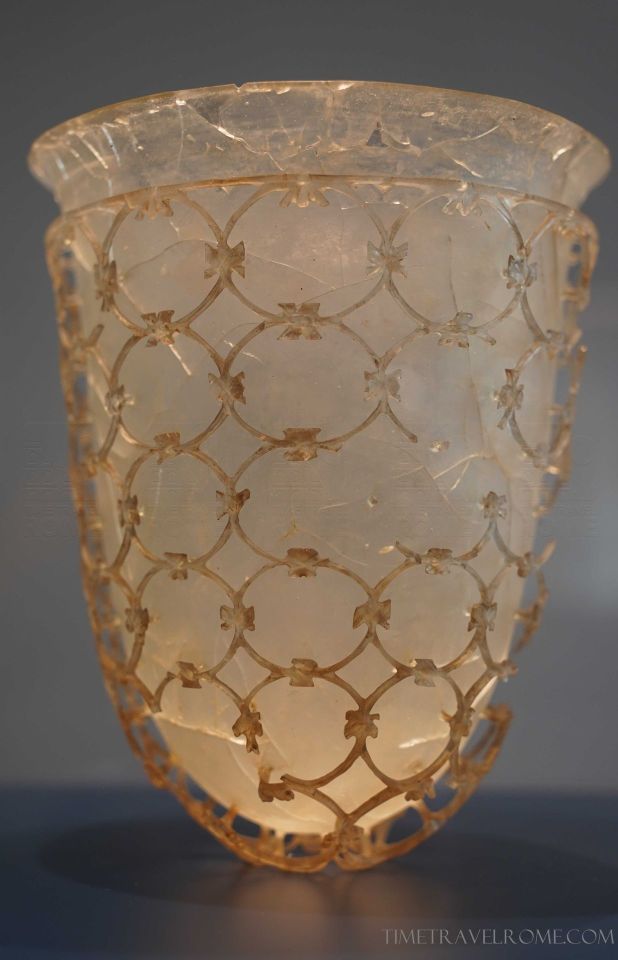
"Cage cup", or a diatretum – a luxury late Roman glass vessel, found from roughly the 4th century. Today, some 60 fragmentary diatreta are known today, 19 of which are almost complete. This piece, was found in 1950 in the sarcophagus in Niederemmel, near Trier, Germany.
Diatreta consist of an inner beaker and an outer cage that stands out from the body of the cup, to which it is attached by short stems. This exemplar is part of the Trier Landesmuseum permanent collection.
The manufacturing technique must have been laborious, but it's still a mystery: either the inner beaker and the cage were made separately and heat-soldered, or the whole assembly was chiselled from a single block of glass.
The majority of finds of diatreta are from Roman sites along the Rhine, suggesting that they were produced in the area, perhaps at Trier. This was the largest city of Roman Germany and the main residence of Constantine I for many years, coinciding with the period when the cups seem to have been made.
Photos and text by Time Travel Rome
776 notes
·
View notes
Text

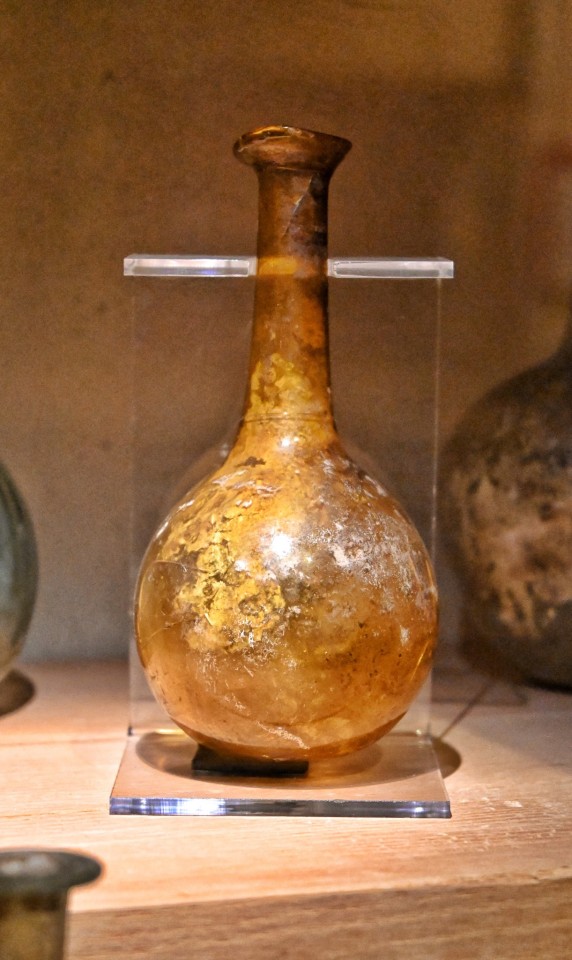
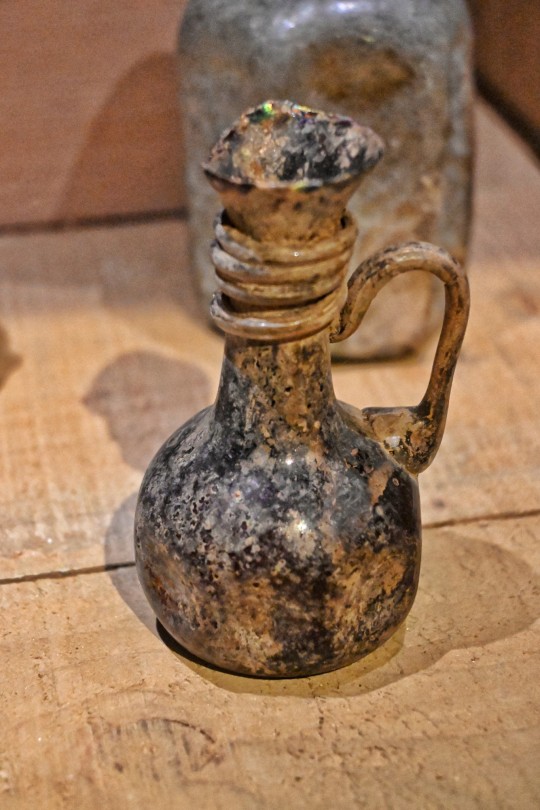



Roman Glassware Photoset 2, Hull and East Riding Museum, Hull, Yorkshire
#roman army#roman glassware#roman style#romans#roman living#roman empire#roman glass#roman craft#roman fort#roman britain#roman design#archaeology#ancient culture#ancient craft#yorkshire
86 notes
·
View notes
Text

~ Goblet.
Place of origin: Roman Empire, Eastern Mediterranean
Date: A.D. 5th-6th century
#5th century#6th century#glass#glassware#goblet#eastern Mediterranean#roman#roman empire#history#archeology#museum
319 notes
·
View notes
Text
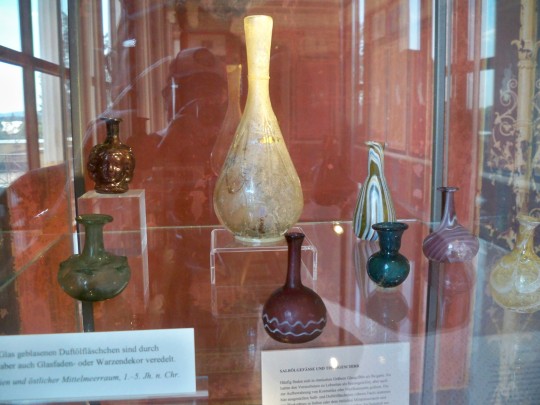
Yesterday I was in Aschaffenburg visiting the Pompeianum and the castle.
Roman perfume bottles made from glass. I love how some of them look almost like art nouveau designs.
0 notes
Text
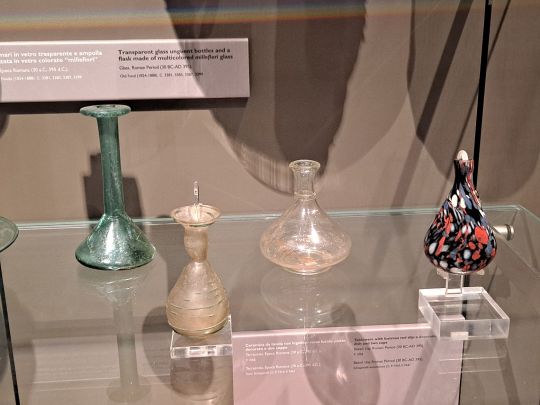
Roman glassware
Egypt, 30 BCE-395 CE
Egyptian Museum, Turin
Turin, June 2023
56 notes
·
View notes
